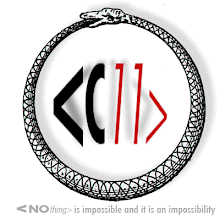

 The Ponrabbel
The Ponrabbel operated as a steam
'bucket dredge' in the Tamar River from the 1920s until the 1960s. The Port of
Launceston authority was determined that as many ships as possible should berth at wharves close to the city centre. Attempts to move the port further down the river were vigorously resisted as
Launcestonians imagined their city as a port
– and sometimes as an alternative 'capital'.
It is no accident that the memory of this dredge lives on in the memories and imaginations of so many
Launcestonians as the silting of the Tamar persists –
and is likely to continue to do so as the estuary is ever likely to continue to silt up. Indeed, the Tamar's silting is a contentious political football that is being flicked between Local, State and Federal Governments against various political backdrops
– particularly at election time.
"The Tamar Estuary is a drowned valley formed during a faulting event during the Tertiary period. Tectonic, volcanic and glacial activities have helped shape the Tamar Valley into that which we see today. The Estuary receives three major river systems: the South Esk; the North Esk; and the Meander. These three main catchments form a large drainage basin, which covers approximately 18% of Tasmania’s land mass." –
Parks & Wildlife Service Tasmania – Given the estuary's geography there is little wonder that at the confluence of the Nth &
Sth Esk Rivers there might be be silting albeit exasperated by the
postcolonial agricultural and forestry exploitation of the Tamar's catchments.
The Ponrabbel was used to dredge the channel near
Launceston to facilitate shipping access. As larger ships were brought into the Tamar some strategic rocks in the Tamar were blasted and removed by the
Ponrabbel to improve navigation. She was also used in the building of the Bell Bay berthing facilities. Albeit that commercial shipping barely persists in the upper reaches of the Tamar, the silting of the estuary
'interferes' with the waterway's aesthetics and its recreational '
utility' – and is thus seen as tourism detractor and simultaneously as evidence of environmental degradation.
The area around the Tamar Estuary was a
placescape occupied by various bands of Aboriginal people, who were later called ‘
The Northern Midlands Tribe’ by the Europeans who had moved into the valley and taken the Aborigines’ land. According to contemporary
'authorities', the estuary itself was known by the Aborigines as
"kun.er.mur.luk.er", or [
"ponrabbel"]. Port
Dalrymple was recorded as being called
"lor.er.nul.ray.tit.te.yer" and the Port
Dalrymple bands known as the
"le.ter.re.mair.re.ner" and
"py.he.mair.re.me.ner" people –
Parks & Wildlife Service TasmaniaIn a contemporary context the underlying assumptions attached to the Tasmanian Aboriginal people's
'languages' , and their use in place naming, may be contested in a linguistic and cultural context given the paucity of anthropology and linguistics of the colonial era when Aboriginal vocabularies were collected. Meanings can be found in context and given that the
'palawa' people's cultural realities and belief systems were looked at from the
'perspective of clonisation' 'ponrabbel's palawa' meaning/s is open to contention.
Specifications
- Type of Vessel: TS Bucket Dredge.
- Date Built: 1916.
- Builder: Ferguson Bros. Ltd., Glasgow.
- Dead Weight: 457 tons.
- Length: 155ft 3in.
- Breadth: 34ft 2in.
- Owner: Marine Board of Launceston, Tasmania.
- Engines: 2 X 2 cyl 15in & 30in X 21in.
- Engine Builder: Ferguson Bros Ltd., Glasgow.
The Ponrabbel was built under the supervision of surveyors in accordance with the rules and regulations of Lloyd’s Registry of Shipping.Further Information: Low Head Pilot Station Museum
... CLICK HERE CLICK ON AN IMAGE TO ENLARGE
CLICK ON AN IMAGE TO ENLARGE
Compiled by Ray Norman, Launceston




























